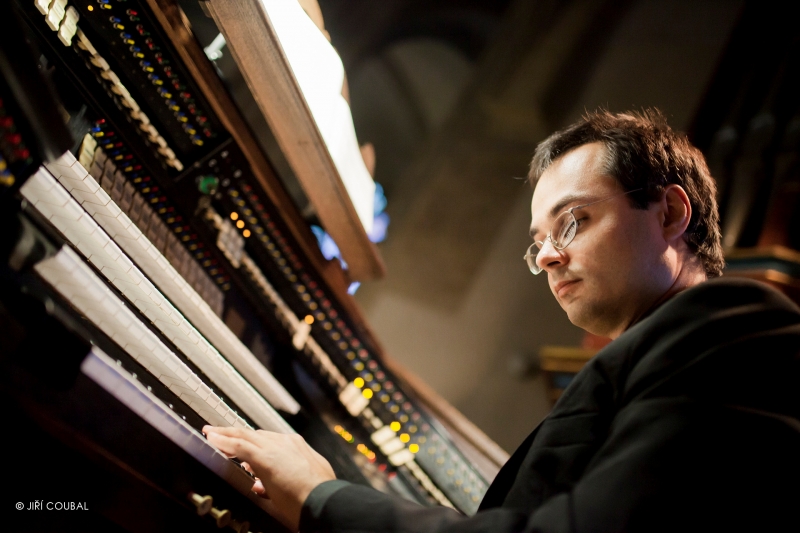The opening Baroque work quotes the Easter hymn O filii et filiae (Ye sons and daughters). In the French Baroque tradition, the offertory was given a prominent position musically, affording considerable scope to the organist’s artistry. Jean-François Dandrieu (1682–1738) transforms the hymn’s stanzas using the form of variation partita and so employs the contrast between strong, loud variations and more intimate trios, bicinia, etc., as is typical of Baroque French organ works.
Marcel Dupré’s (1886–1971) Cortège et Litanie provides a contrast, being from a different era and tonight is performed on the great organ in the main loft. The concert is conceived as a Ceremony and this piece begins the ceremony proper, following the introductory Baroque variations. The work opens with the Cortège theme, followed by an exposition of the second theme, where Dupré opts for a quotation of the melody from Jehan Alain’s litanies. He then combines the two themes and the work ends in a joyful gradation.
César Franck’s (1822–1890) Prière (Prayer) is a self-contained symphonic work. It employs two main themes, which are presented separately and then combined. A very dense harmonic texture, typical of the composer, underlines the character of Franck’s prayer. The piece climaxes in the golden section, where the prayer is, as it were, answered; then the emotion of the music abates.
Karfreitagszauber (The Good Friday music) from Richard Wagner’s (1813–1883) opera Parsifal is a lyrical fresco, an instrumental interlude during the opera’s third act. It might seem that an arrangement of opera music for the solo organ is a whim on the part of the organist. However, when it works, the result can be surprising, especially if what follows is the resurrection.
Olivier Messiaen’s (1908–1992) La Résurrection du Christ (Christ’s resurrection) suggests the ambiance of the Easter morning and the empty tomb with the stone rolled away. It is as if the long sets of chords progressing from the depths to the heights illuminate the whole space. Joie et Clarté des Corps Glorieux (The Joy and Clarity of the Glorified Bodies) is a dialogue between two fundamental colours of register; and it lends its title to tonight’s concert. In the louder sections, the joy of the glorified bodies is very much in evidence; whereas in the quieter sections, it is subsiding and preparing for a new outburst.
Czech composer Jiří Ropek (1922–2005) used the chant of the Easter sequence Victimae paschali laudes (Praises to the Easter victim) and lets it resound in a number of dynamically and rhythmically differentiated treatments Ropek’s musical language is very intelligible and the cantus firmus easily discernible. The composition climaxes in a bravura fugue.
Ondřej Múčka, translated by Štěpán Kaňa
______________________________
JOY AND SHINE
Easter organ concert
Jean-François Dandrieu: Offertoire pour le Jour de Pâques « O filii et filiæ »
Marcel Dupré: Cortège et Litanie, Op. 19 Nr. 2
César Franck: Prière, Op. 20
Richard Wagner: Karfreitagszauber z opery Parsifal, WWV 111, arr. Erwin Horn
Olivier Messiaen: La Résurrection du Christ
Olivier Messiaen: Joie et Clarté des Corps Glorieux
Jiří Ropek: Variace na „Victimae Paschali Laudes“
Michael Bártek organ
The Basilica of the Assumption of Our Lady, Mendel square
April 25, 7.30 PM

